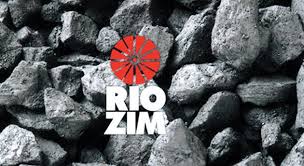From RioTinto to RioZim: The power of self-sufficiency

RioZim’s story reflects the power behind self-sufficiency. The Zimbabwe Stock Exchange listing arose in August of 1956 as Rio Tinto Southern Rhodesia Limited.
It was an incorporation of Rio Tinto plc, an Anglo-Australian multinational mining company founded in 1873 when a multinational consortium of investors purchased a mine complex on the Spanish River (Rio Tinto), a common hub of ore mining then.
Empress Nickel Refinery (ENR) coloured operations from inception year until the acquisitions of Cam and Motor Mines at Eiffel Flats (1959) and Sandawana Emerald mine (1961). Rio Tinto Southern Rhodesia detached itself from the parent company between 1965 and 1979 and grew into the single largest money earner, exporting millions of pounds’ worth of nickel, emeralds and tin.
In September of 1968, the company briefly closed Cam and Motor Mine and diverted attention to Empress Nickel Refinery taking advantage of firm nickel prices then. By 1969 Rio Industries came into being. A few years later in 1975, Renco Mine was acquired and duly opened in 1982.
Rio Tinto Zimbabwe Limited, as it became known after independence, entered a Joint Venture Agreement in 1994 with RTZ Mining and Exploration Limited to establish and operate Sengwa Colliery.
Each of the parties acquired 50 percent shareholding in the colliery.
The Company parted ways with the holding Rio Tinto plc in 2004 and became an overtly self-sufficient entity (RioZim) producing gold, coal, toll refines, nickel and copper. Weaning the company off its parent never led to demise. Former parent Rio Tinto plc exited Zimbabwe in 2015 and by then RioZim acquired Murowa Diamonds, rescuing the almost crumbling concern through assuming its management.
Upon expansion, value-addition was sought through mineral processing. In October 2016 Cam and Motor Mine gold-processing plant was launched with a capacity to process 2400 tonnes per day.
It had a recovery potential of 93 percent.
The huge tonnage out-shined the usual 700 tonnes processed at old Dalny Mine. The new development that tripled production ushered in a major turnaround, making RioZim the leading gold miner in Zimbabwe.
Dalny Mine at Chakari in Kadoma was a component bundled in Falcon Gold’s subsidiary (Palatial Gold Investments) that RioZim acquired in 2013.
Imbued in the purchase was the mine, a gold processing plant, several surrounding gold claims as well as equipment and a mining compound.
Weighing credit on the acquisition, RioZim’s revenue for the half-year ended June 2017 rose 16 percent to $37,8 million from the prior 2016 amount. Acquisitions were in line with RioZim’s initiative then to consolidate gold assets and output under Rio Gold through mergers and acquisitions for the envisaged expansion of gold operations.
RioZim currently banks on the projected success of lined up strategic projects which include construction of the BIOX plant at Cam and Motor Mine and the Sengwa Power Station. Success is anchored on engagements made with Monetary Authorities_Business Weekly


